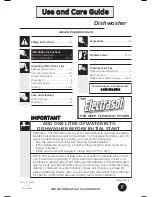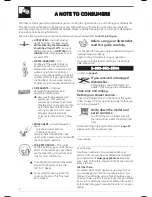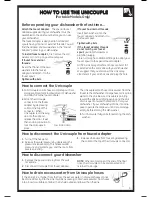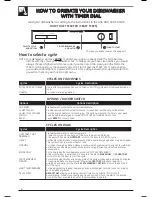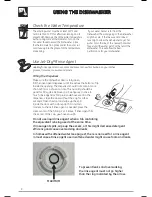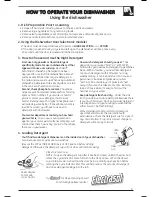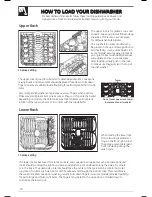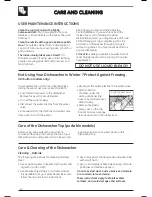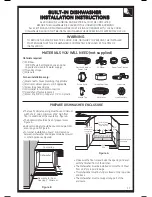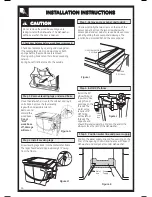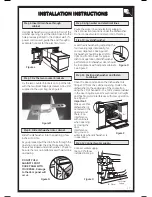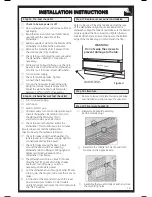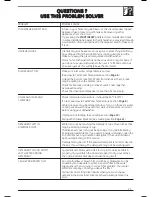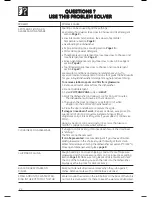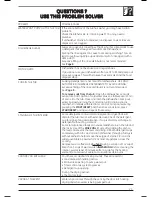
9
First, use only powder or liquid detergent
specifically made for use in dishwashers. Other
types will cause over sudsing.
Electrasol
®
Automatic Dishwashing Detergent has been
approved for use in all GE dishwashers. All wash
cycles except RINSE ONLY require detergent in
the main and pre-wash cup. When using automatic
dishwashing detergent tabs, simply place one tab
in the main wash section and close.
Second, check phosphate content.
Phosphate
helps prevent hard-water materials from forming
spots or film on dishes. If your water is hard (7
grains or more), your detergent has to work
harder. Detergents with a higher phosphate level
will probably work better. If phosphate content is
low (8.7% or less), you'll have to use extra
detergent with hard water.
Your water department can tell you how hard
your water is,
so can your county extension
agent or your area's water softener company. Just
call and ask them how many“grains” of hardness
there are in your water.
How much detergent should you use ?
That
depends. Is your water“ hard” or “ soft” ? With
hard water, you need extra detergent to get dishes
clean. With soft water, you need less detergent.
Too much detergent with soft water not only
wastes money, it can be harmful. It can cause a
permanent cloudiness of glassware, called
“etching” . An outside layer of glass is etched
away! Of course, this takes some time. But why
take a chance when it's easy to find out the
hardness of your water.
Keep detergent fresh and dry.
Under the sink
isn't a good place to store detergent because there
is too much moisture. Don't put powder detergent
into dispenser until you're ready to wash dishes,
either (It won't be fresh OR dry).
Some detergents contain colorant (pigment or
dyes) that will discolor the tub interior with
extended use. Check the detergent cup for signs of
any discoloration. If cup is discolored, change to
detergent without any colorant.
4. Loading Detergent
You'll find two detergent dispensers on the inside door of your dishwasher.
Two, because some cycles use two washes.
(Be sure the CYCLE INDICATOR DIAL is at OFF position before adding
detergent. Otherwise, the detergent cup will not close and latch properly).
Close the main cup.
NOTE : To open the detergent cup after it has been closed, unlatch the door and
rotate the Cycle Indicator Dial a full turn to the OFF position. When the closed
cup contains soap it is best that the door be in a partially open position before
rotating the Cycle Indicator Dial. This will help reduce the amount of detergent
and rinse aid agent spillage into the tub.
OPEN
CUP
MAIN
CUP
GRASP HANDLE,
ROTATE AND
CLOSE TIGHTLY
For Virtually Spotless results !
Try for Deep Cleaning Power !
®
®
HOW TO OPERATE YOUR DISHWASHER
HOW TO OPERATE YOUR DISHWASHER
Using the dishwasher
3. How to Choose and Use the Right Detergent
• Scrape off hard soils, including bones, toothpicks, skins and seeds.
• Remove large quantites of any remaining foods.
• Remove leafy vegetables, meat trimmings, and excessive amounts of grease or oil.
• Remove acidic food soils that can discolor stainless steel.
2. Using the Dishwasher Door (electronic models)
• The door must be closed and locked to select a
LOAD SELECTION
or an
OPTION.
• If the door is opened during a cycle and left open, the dishwasher
will beep once every
30 seconds
until the door is closed and latched into place.
1. Dish Preparation Prior to Loading

